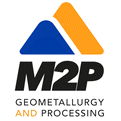In the post Importance in the characterization of mineral deposits, we shared that planning a general characterization of minerals program should answer the fundamental question: Are they oxides or sulfides?
Knowing what type of mineral we have leads us to the type of extraction or concentration process, where the standard is to carry out a battery of metallurgical tests and chemical and mineralogy analyses … which depending on the deposit’s variability may oscillate between 50 to 100 samples per year with CWI, RWI, SMC or SPI tests (depending on the school to follow), BWI, Bottle test and 1 meter batteries for hydrometallurgy or Rougher Kinetics and Cleaning for flotation, not forgetting the ICP battery, Total Rock, QemScan or Tescan.
And what would happen if we only run chemical or mineralogical analyses and through this information we obtained the result of hardness index? Copper Recovery? Final concentrate law? … Can we “economize” on metallurgical testing?
In recent years, an interest in developing proxies has grown … We can define them as a set of equations or models that relate primary data (grades, hardness index, etc.) with performance variables (throughput, recovery, extraction, etc.).
For example, Fourier Transform infrared spectroscopy (FTIR) is based on the fact that when infrared radiation reaches a sample, part of the radiation is absorbed by the sample and another part passes through it (is transmitted). The resulting signal at the detector is a spectrum that represents the sample’s molecular “fingerprint“.
What is the use of doing an FTIR analysis? Different chemical structures (molecules) produce different spectral fingerprints … Then, why not to correlate this measurement with Bond hardness index results? Or with copper recovery or Moly or Fe or As? And build a Database with proxies that allow, as we tell them in the Geometallurgy Knowledge Hierarchy, to give us more information and knowledge about the deposit with performance estimators and thus improve Geometallurgical Confidence or have a better estimate for Integrated model comminution-flotation implementation.
At Mine to Port Consulting, we have experience to support you in generating databases to perform proxy analysis between primary data and performance estimates through models / equations.
